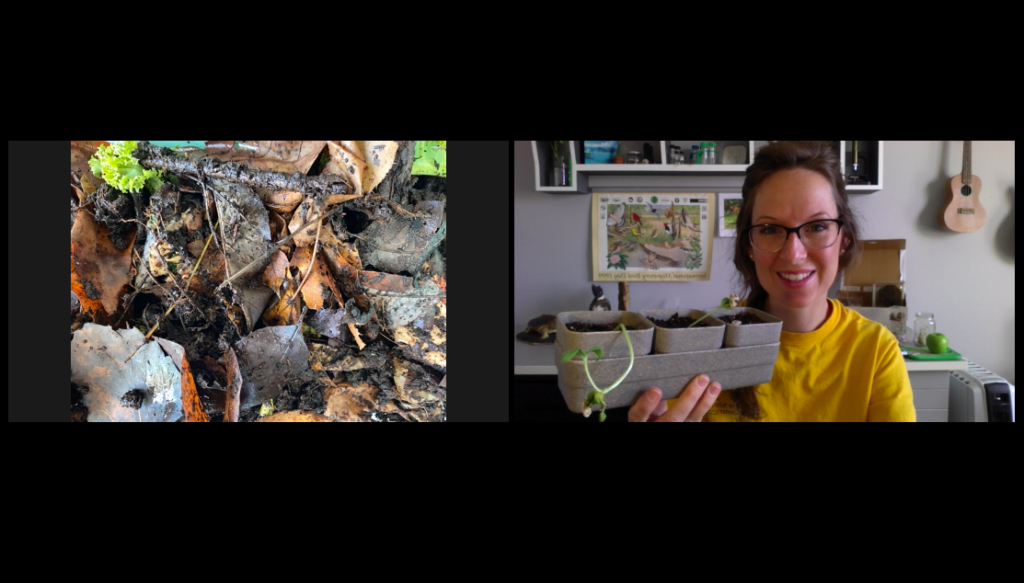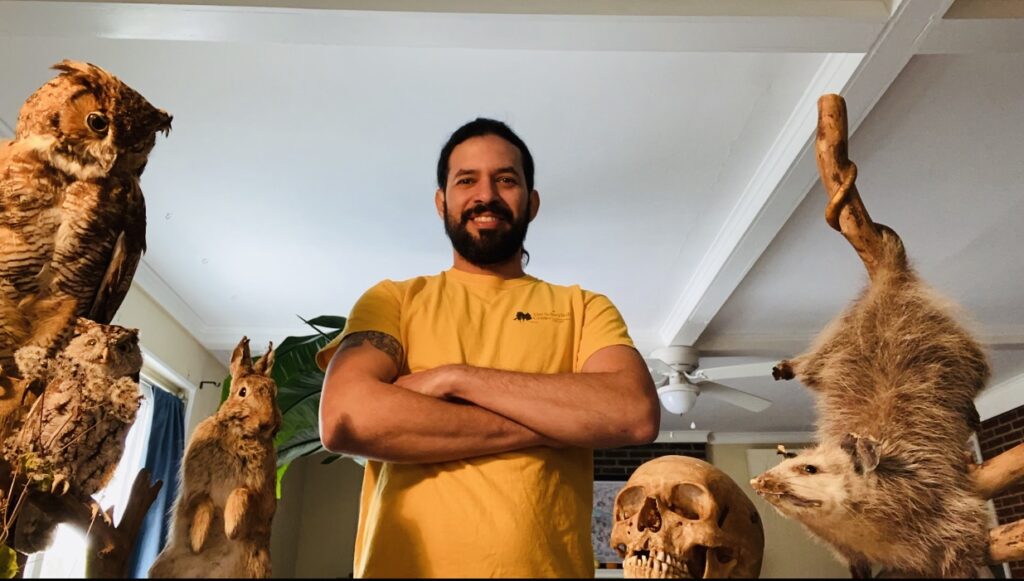When most schools in our area began the year with virtual learning, our environmental educators were faced with an extraordinary challenge: how can we translate a school field trip in our forest into an engaging virtual experience for students learning at home?
“Half of the experience is just being outdoors,” explains environmental educator Patti Dunne. “Any observation that relies on a sense other than sight—the feel of a pelt or the scent of a leaf, for instance—you have to figure out how to get that across in a different way. Many of the lessons we’re rewriting entirely.”
Our education team responded to this challenge with creativity and innovation, breaking down lessons into basic concepts and rebuilding them with a mixture of live interaction, pre-recorded videos, and self-guided outdoor activities. Through the end of January, educators have reached over 700 students through virtual school programs.
The addition of pre-recorded videos offers the opportunity for students to observe habitats, organism interactions, and scientific concepts in action. A watershed lesson, for example, can include a video recorded during a rainstorm, capturing the movement of stormwater runoff from street to storm drain, as well as the use of interactive maps to allow students to visualize the watershed they live in.
Teaching in a virtual format has also had some unexpected advantages. Educator Rebecca Deegan remarks that with in-person field trips, “you’re limited to what you have on hand; you might need something that’s being used by another class. With virtual programs, you have access to the entire internet to assist your lessons, so it’s less about your individual resources.” Manager of School Programs Eduardo Dueñas adds that with virtual classes, “We can give the students lots of time to ask questions and indulge their curiosity. There’s not as much pressure to rush, so some students really take advantage of that and ask lots of questions.”
One thing that hasn’t changed with the new dimension of virtual school programs is the rewarding sense of fulfillment that educators feel when helping students make a meaningful, impactful connection to nature. As part of a self-guided “homework” assignment for Lankenau High School’s AP Environmental Science class, students had to go outdoors to collect a soil sample, make observations, and answer questions about it. One student commented that they enjoyed the homework because it was the first time they’d been outdoors in weeks. Not only are these programs providing engaging educational instruction, but they’re also helping to keep students connected to nature at a time when they are indoors more than ever before.
Executive Director Mike Weilbacher notes, “We have been leading school field trips for over fifty years. This is one signature program that has been consistent throughout our existence. Even with COVID, we continue to engage students virtually in our passion for the environment.” To learn more about having a virtual education program in your classroom, contact Beatrice Kelly at 215-853-6249 or [email protected].
—By Aaliyah Green Ross, Director of Education


